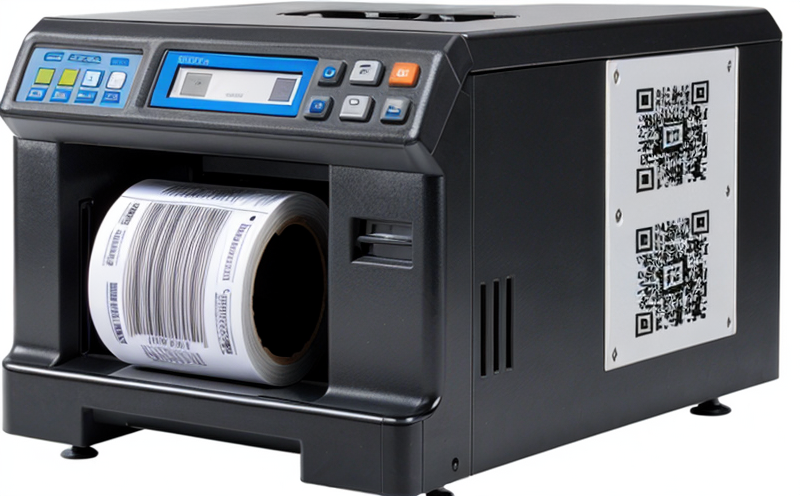GS1 DataMatrix Barcode Verification
The GS1 DataMatrix is a type of two-dimensional barcode that is widely used in industries where space-saving and high-density data storage are crucial. This barcode standard is governed by the GS1 organization, ensuring compatibility and interoperability across different systems globally. The primary purpose of a GS1 DataMatrix is to encode product identification information such as Universal Product Codes (UPCs), European Article Numbers (EANs), serial numbers, or other alphanumeric data into a small, dense format that can be scanned at high speeds.
GS1 DataMatrix barcodes are essential for improving supply chain efficiency and reducing errors in inventory management. Their compact design allows them to be printed on packaging of various sizes, from microchip packages to large pallets, making them versatile across different sectors such as pharmaceuticals, electronics, automotive, and retail.
Verifying the integrity of GS1 DataMatrix barcodes is critical for ensuring accurate data transmission and preventing errors in downstream processes. This verification process involves several steps: decoding the barcode to extract the encoded information, comparing it with the expected data, and checking for any signs of corruption or damage that could lead to misreads.
The testing procedure typically begins by preparing a specimen using the appropriate printing method and substrate. The printed barcodes are then scanned using a GS1-compliant barcode scanner, which decodes the information and compares it against the original data. If discrepancies are found, further inspection is necessary to identify the cause of the error.
Several industry standards guide the testing process for GS1 DataMatrix barcodes:
- ISO/IEC 24778:2013 specifies the structure and encoding rules for DataMatrix symbols, which form the basis for verifying compliance with this standard.
- EN 16392-1:2015 provides guidelines on the printing quality of GS1 barcodes, including resolution requirements to ensure readability across various environments.
- ASTM D7408-14 outlines methods for verifying the integrity and readability of two-dimensional barcodes like DataMatrix symbols.
To meet these standards, laboratories use advanced scanning equipment capable of interpreting complex barcode structures. These scanners are calibrated to ensure consistent results across different batches of printed barcodes. The laboratory's expertise lies in providing comprehensive verification services that go beyond mere decoding; they also offer insights into potential issues affecting barcode quality and suggest corrective actions.
By adhering strictly to these standards, companies can enhance their supply chain operations by minimizing errors related to misreads or failed scans. This not only improves operational efficiency but also contributes positively towards sustainability goals by reducing waste associated with incorrect data entry at various points along the distribution chain.
Applied Standards
The GS1 DataMatrix barcode verification process is governed by a series of international standards that ensure consistent quality and reliability across different systems. These include:
- ISO/IEC 24778:2013: This standard defines the structure and encoding rules for DataMatrix symbols, providing a framework for verifying compliance with this specification.
- EN 16392-1:2015: It specifies requirements for printing quality of GS1 barcodes, emphasizing resolution criteria essential for ensuring readability under various conditions.
- ASTM D7408-14: This document offers methodologies for assessing the integrity and readability of two-dimensional barcode symbols such as DataMatrix.
These standards are vital in maintaining high levels of accuracy when encoding and decoding GS1 DataMatrix barcodes. Compliance with these guidelines ensures seamless integration into global supply chains, reducing discrepancies and enhancing overall operational efficiency.
The laboratory's commitment to adhering strictly to these standards underscores its dedication to delivering reliable verification services that contribute significantly towards meeting industry expectations regarding quality control practices.
Industry Applications
- Pharmaceutical Industry: In this sector, GS1 DataMatrix barcodes are used for tracking individual units of medication down to the package level. This helps in maintaining accurate inventory records and facilitates traceability throughout the supply chain.
- Electronics Manufacturing: Here, these barcodes play a crucial role in managing component parts and finished products, ensuring that each item can be uniquely identified and traced back through manufacturing processes.
- Automotive Sector: Within this industry, GS1 DataMatrix barcodes are employed for vehicle identification and part tracking during assembly lines, helping manufacturers maintain precise records of production batches.
- Retail Distribution: In retail environments, these barcodes assist in managing stock levels, enabling efficient restocking strategies based on actual sales data rather than estimates.
In all these sectors, the ability to accurately verify GS1 DataMatrix barcodes is paramount. Mistakes during this verification process can lead to significant operational disruptions and financial losses. By offering reliable verification services that align closely with relevant standards, our laboratory supports businesses in achieving optimal performance across their supply chains.
Environmental and Sustainability Contributions
The use of GS1 DataMatrix barcodes contributes positively to sustainability efforts by minimizing waste associated with incorrect data entry. By ensuring accurate information is transmitted through these barcodes, companies can reduce errors in inventory management, thereby optimizing resource utilization.
Accurate tracking facilitated by reliable GS1 DataMatrix verification helps businesses identify areas where improvements are needed, leading to more efficient operations and reduced environmental impact. For instance, better inventory control reduces overproduction and subsequent waste, contributing significantly towards sustainable practices.
Moreover, the widespread adoption of such barcodes promotes recycling initiatives by enabling easier identification of products at end-of-life stages. This supports circular economy principles aimed at extending product lifecycles while reducing landfill contributions.
The laboratory's role in providing robust verification services aligns with broader sustainability goals by supporting industries that embrace eco-friendly practices. Through precise data transmission and error minimization, we contribute to greener business operations across various sectors.





